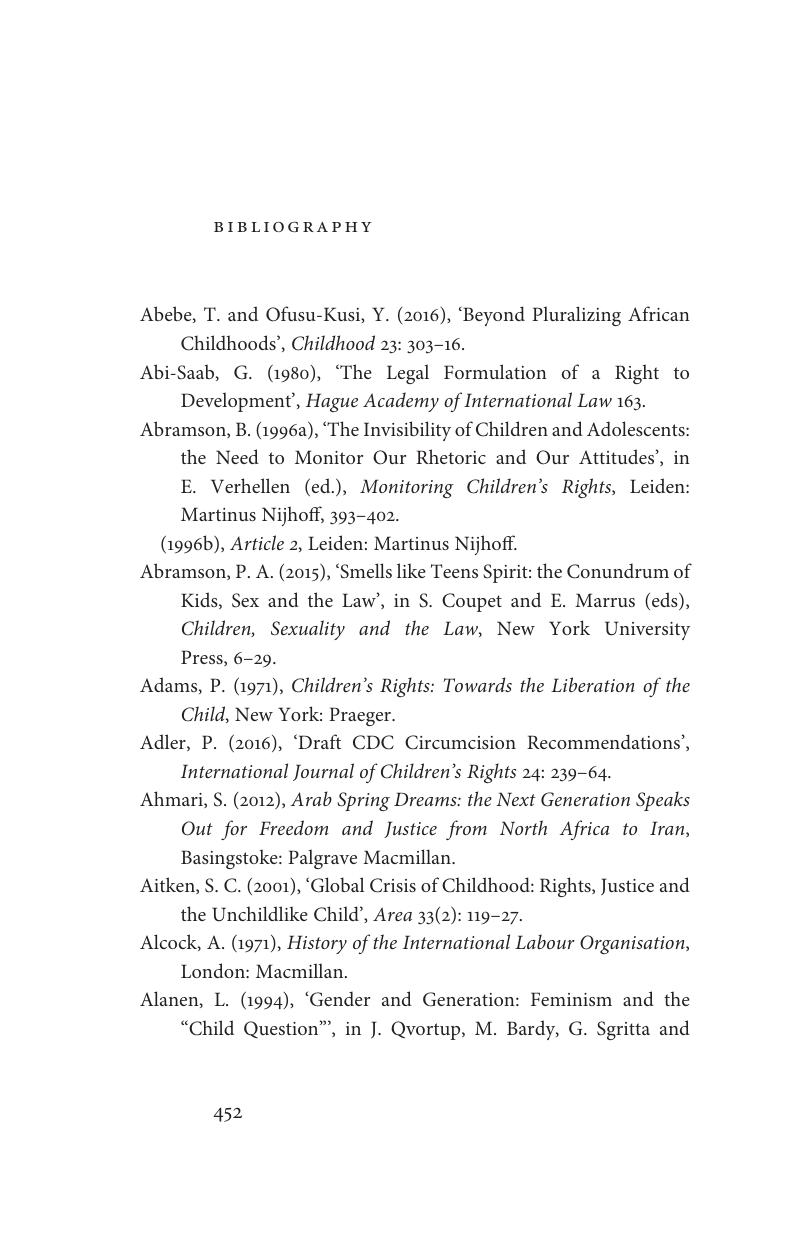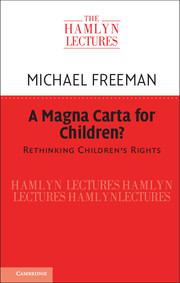Book contents
- A Magna Carta for Children?
- A Magna Carta for Children?
- Copyright page
- Dedication
- Contents
- The Hamlyn Trust
- The Hamlyn Lectures
- Preface
- Acknowledgements
- Prelude
- Part I Is it Wrong to Think of Children as Human Beings?
- Part II Even Lawyers Were Children Once
- Part III A Magna Carta for Children
- Appendices
- Bibliography
- Index
- References
Bibliography
Published online by Cambridge University Press: 18 September 2020
- A Magna Carta for Children?
- A Magna Carta for Children?
- Copyright page
- Dedication
- Contents
- The Hamlyn Trust
- The Hamlyn Lectures
- Preface
- Acknowledgements
- Prelude
- Part I Is it Wrong to Think of Children as Human Beings?
- Part II Even Lawyers Were Children Once
- Part III A Magna Carta for Children
- Appendices
- Bibliography
- Index
- References
Summary

- Type
- Chapter
- Information
- A Magna Carta for Children?Rethinking Children's Rights, pp. 452 - 548Publisher: Cambridge University PressPrint publication year: 2020



